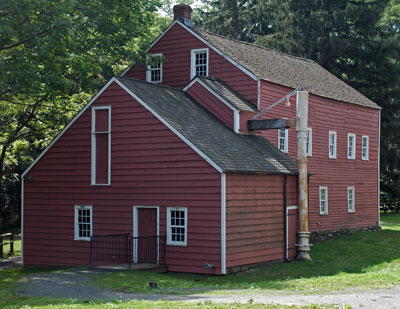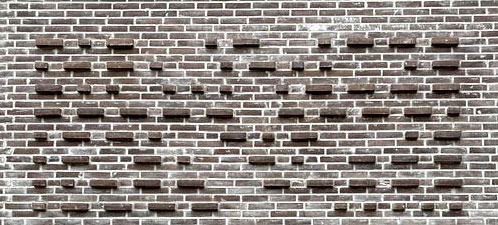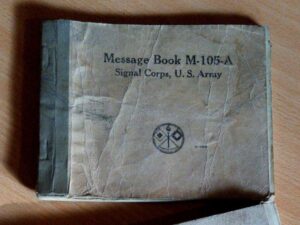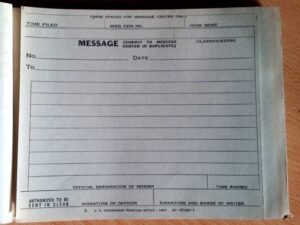This is a fortnightly newsletter about the New Zealand Net. If you would like to be notified by email when a new edition is published, please contact ZL1NZ.
Browse our newsletter archive.
Featured keys
I came across this video recently and thought it was quite well done. Hope you like it.
Quick notes

Radiogram forms are the theme of this edition. Read on for more information.
Gerard ZL2GVA fixed some bad connections in his dipole and is now 599+10dB in Auckland which is way stronger than before. What’s more, Gerard says he’s no longer getting bitten by RF in the shack!
Straight Key Night is only 5 weeks away! Have you selected your key yet? Time to give it a tune up! I always thought straight keys were too simple to require maintenance – then, a few minutes into one SKN a few years ago, my key fell apart! Don’t leave anything to chance…
Could you be the next Trivia Master? I’d like to appoint a net member to create the weekly trivia radiograms for 2021. Or you could start sooner if you want. Please let me know if you’re interested in taking this on.
QSL Net News? I’ve been told that at least one NZ Net member isn’t receiving the email notification I send each time a new newsletter is published. Fortunately, David ZL2WT relays my announcement to his FISTS mailing list, so the notifications are getting through that way. But, if you think you should be on my list, but your aren’t getting the emails directly from me, could you please check your spam/junk folder and then let me know so we can work on a solution? Thanks.
Cartoon: Philip ‘Gil’ Gildersleeve
Letters to the editor
Re: Getting word spacing right
What I’ve used as a guide for word spacing is my FT-897’s semi break-in option. Set it to a delay that’s just enough to switch back to receive after a word and that’s how long you wait between the words.
You don’t have full QSK using this, but I’m not using that anyway. I don’t like the relays clicking all the time. The little receiving window in between the words is still an option to hear any interruptions from other stations.
– Gerard ZL2GVA
I was just looking for something else in some of my old reference material, and stumbled across this from the December 1928 edition of the NZ Radio Handbook. You mentioned in the NZ Net newsletter about the old 5-dit space rather than 7 between words, and funnily enough this is precisely what this article is talking about.
– Bruce ZL1BWG

Re: Sinking of Mikhail Lermontov
Congratulations on an impressive account of the sinking of the cruise ship Mikhail Lermontov in NZ Net News Nr40. Please convey my thanks to David ZL2WT.
– Manny VK3DRQ (via radiogram)
Photo flashback

I received this QSL card a few days ago. What a great photo!
Military beacons on amateur frequencies
After the Net a couple of days ago, I was tuning around on 40m, and a couple of the “letter stations” were coming in well.
In case you don’t know what I’m talking about, here’s a view of the two signals, with the letter F being sent continuously on 7039.20 and the letter M also being sent continuously on 7039.40.

ZL1ROT SDR, 0845Z, 29 Oct 2020
I decided to record them simultaneously by tuning halfway between them and I also added some notch filtering to reduce the F station which was quite a bit stronger.
You’ve probably heard these stations too. But what are they?
According to people who track such odd stations, these are Russian HF Beacons, aka Single Letter Beacons, Cluster Beacons or Channel Markers.
“Cluster” refers to the fact that several beacons operate very close to each other in frequency. Unfortunately, that includes illegal operation in the 80m and 40m amateur bands.
They could be propagation beacons. Or some say they mark channels on which the Russian military may decide to communicate.
The F beacon is in Vladivostok and the M beacon is in Magadan, according to the Numbers and Oddities newsletter.
Here’s lots more information about the Single Letter Beacons. Which ones have you heard?
A patient waiter is no loser
A recent NZ Net Trivia message asked for the identity of the person who uttered a famous quote. (Well, famous in the world of Morse, at least.) Here’s the background:

Speedwell Ironworks, in New Jersey, where Morse and Vail first demonstrated their telegraph
Samuel FB Morse toiled for three years and finally had a sending instrument which worked fairly well. But he had not the money to construct another. Five years after Morse had begun his work, Alfred Vail, son of Judge Stephen Vail, joined him as a working partner. The Judge gave them 2000 dollars and allowed the use of the foundry he owned. Weeks dragged on and he saw no results. He was laughed at by his friends for having put money into this wild scheme. On 6 January 1838, he was invited to his son’s shop. He was asked to write the message he wished to have sent and received on the new telegraph. He wrote the message, “A patient waiter is no loser,” and handed it to his son. His son clicked it off on his instrument. Morse at the other end of the line reported its receipt. The message was accurately received. The telegraph had been invented.
– Marion Florence Lansing: Science Through the Ages
Morse musings
The invitation-to-transmit signal is, of course, “K”.
But its cousin “KN” seems to cause a bit of confusion.
First, it means “go ahead and transmit – but only if you are the station that I am calling.” So putting “KN” after a CQ, for example, would make no sense at all. It’s intended to be used in those rare situations where you do not want another station to break in on the conversation.
(When I was a young ham, we used to break in on conversations much more than seems to happen these days. Have we become more polite – or more timid?)
The second point about KN is “how is it supposed to sound”? You might have noticed that I didn’t type it as a prosign, which would have been <KN> and sent as a single character dah-di-dah-dah-dit – even though that’s the way I send it.
From what I can tell, the morse community is pretty much evenly divided – and has been for many years – on whether it should be sent as KN or <KN> so this is one case in which, as the French say: Vive la difference!
New radiogram forms for NZ Net members

Now you can download radiogram forms that display the NZ Net logo and information about the net – perfect for delivering messages to people who many not be familiar with amateur radio traffic handling.
Apart from the branding across the top, these are identical to the maritimeradio.org radiogram forms to which I have linked in the past. They can be printed two-to-a-page on A4 paper.
World War 2 message forms
Paul ZL1AJY sent these photos of World War 2 message books (you can click each image to enlarge it).
“These were given to me about ten years ago as an interesting find. Dated 1942, they are the sort of thing war surplus stores would flog off in the 1960s. Valentines in Hamilton was full of odd stuff; as kids it was
a must-visit on late night Fridays.”
Signal reports requested
Maritime Radio Historical Society members have been unable to access the KPH San Francisco Radio transmit and receive sites due to COVID-19 restrictions. They have, however, obtained a Special Temporary Authority to use an alternate transmit site in Valley Springs, California for station KSM (they were unable to do this for KPH because they don’t own that licence).
Although they are using KSM frequencies, the callsign associated with the STA is WRJG440.
Signal reports would be greatly appreciated.
Call sign: WRJG440
Frequencies: 8438.3, 12993.0
Mode: CW
Power: 1 kw
Time and Date: 1700 hours, Saturday 31 October UTC (Sunday morning in NZ)
Duration: 2-3 hours
Signal reports to: ksm@radiomarine.org
Scrambled signals

Yes, that really is a photo of a brick wall. But, you’ve probably already noticed something unusual about the bricks – they spell out a message in Morse.
Here’s your assignment: First, decode the message, which begins with the name of the building.
Then use that info to find out in which European city the building is located. It’s not hard, with a bit of Googling.
Thanks to Steve ZL2KE for sending this puzzle.
The first correct answer wins a virtual chocolate fish. Email your reply or send a radiogram to ZL1NZ via NZ Net.
Winner of the previous challenge
Referring to a 1926 QSL card, I asked for the meanings of QSB and QSS as they were in those days. Bruce ZL1BWG got in quickly with an answer to the first part. He noticed that on the QSL card, the blank next to QSB was inscribed “rac” and he cleverly concluded that it meant “raw a.c.” and therefore QSB must have referred to a signal’s tone. That’s absolutely right, and this Q Signal goes right back to the spark transmitter days. Good job Bruce!
The second part of the question was more of a head-scratcher, as the entry on the card for QSS was simply “nil”.
But – there was a hint in the first question! If QSB didn’t have its current meaning of “Your signals are fading,” then perhaps that’s what QSS meant? That would have been a very good guess – and the correct answer.
QSS was actually proposed by the ARRL in QST magazine in the early 1920s, and it seems to have caught on among amateurs of that era, as it appears on many old QSL cards.
Net tip: The slashed zero and other tricks

Years ago I adopted the habit of always writing my zeros with slashes, as shown in this example from a radiogram form, to distinguish between the figure 0 and the letter O.
I do this on outgoing messages to reduce sending errors, but also use it on everything I copy. If you’re not doing this already, I recommend giving it a try.
![]() There are a couple of techniques for distinguishing the figure 1 from the letter I. One is to simply underscore the figure 1. The other is to use the European style of writing the figure 1, as shown at right. This could cause your 1s to look like 7s, so that’s probably why Europeans put a horizontal line through the 7.
There are a couple of techniques for distinguishing the figure 1 from the letter I. One is to simply underscore the figure 1. The other is to use the European style of writing the figure 1, as shown at right. This could cause your 1s to look like 7s, so that’s probably why Europeans put a horizontal line through the 7.
And finally, if you find that your letter Z looks like your figure 2, the usual practice is to put a horizontal line through the Z.
Got a tip or trick to suggest? Get in touch!
Suggestions?
If you have suggestions on how to make the NZ Net better, or things you’d like to see covered in these updates, please contact ZL1NZ. You might even like to write something for the newsletter.
Thanks for reading, and I hope to see you soon on the NZ Net!
—
Neil Sanderson ZL1NZ, Net Manager
New Zealand Net (NZ NET)
3535.0 kHz at 9pm NZT Mon-Fri






